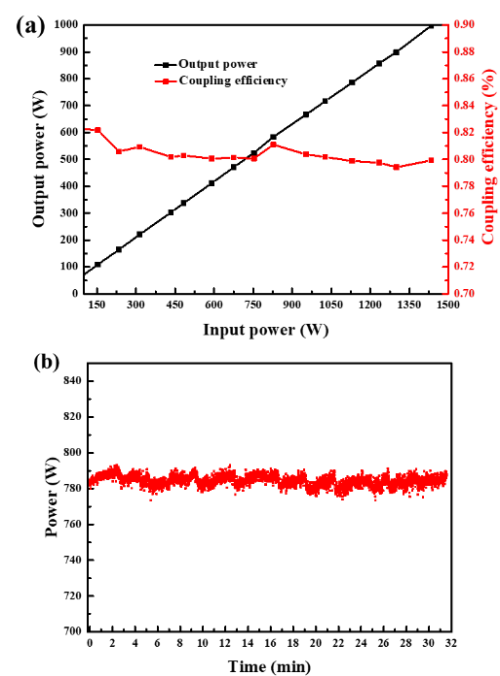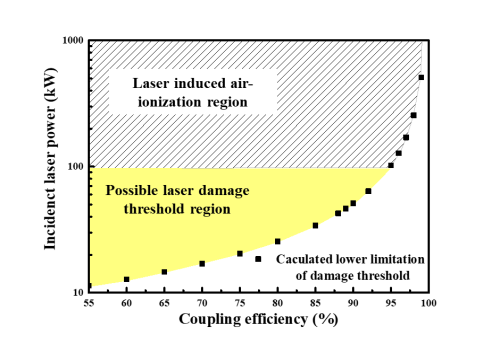A research team from Shanghai Institute of Optics and Fine Mechanics (SIOM) of the Chinese Academy of Sciences (CAS), has successfully demonstrated 1500 W CW laser power to delivery over a 5 m anti-resonant hollow-core fiber (AR-HCF) at 1080 nm and proposed three types of laser damage mechanism in AR-HCF, showing a promising potential of using AR-HCF for over 10 kW single-mode laser delivery. The study is published in the latest Optics letters on July 12, 2022.
High-power laser delivery by using optical fibers shows many advantages which has been extensively applied in laser machining, laser surgery and other fields. A large mode area is necessitated with the rise of delivered laser power through the conventional silica optical fiber, to minimize the chance of laser damage and nonlinear wavelength conversion. To balance the bend sensitivity, multimode design of laser delivery fiber is inevitable where the beam quality and focusing at the distal end become degraded.
Researchers found that the newly emerging large-core AR-HCF provides new solution to circumvent the limit of single-mode high-power laser delivery. AR-HCFs confine the light in the holy core and the nearly free-space propagation environment brings with a much higher laser damage threshold, lower optical nonlinearity and lower waveguide dispersion.
For better verification,a homemade AR-HCF with an attenuation of 0.13 dB/m at 1080 nm wavelength was used in the experiment. An industrial CW fiber laser as the source provides a maximum power up to 1500 W at 1080 nm. A 4-f lens system was used to scale the laser beam and couple the laser power into AR-HCF. Over 1kW power was transmitted over the 5 meter fiber length without damaging the incident fiber end for half an hours.
In experiment, researchers found the damage of AR-HCF for longer operation in the polymer coating and jacket glass rather than the fine microstructure in the cladding. In addition, researchers predicted over 10 kW damage-free laser delivery using AR-HCF in theory through set up a toy mode of damage threshold of AR-HCF.
Researchers said, in the future, scientists should put in more effort to explore the laser-induced air ionization phenomenon in an AR-HCF which plays a key role limiting the potential of the AR-HCF in the high-power laser delivery.

Fig.1. (a) The measured attenuation of AR-HCF. Inset: SEM picture of AR-HCF. (b) Schematic of laser delivery setup. (Image by SIOM)

Fig.2. (a) Measured output power and coupling efficiency AR-HCF with low-refractive-index coating; (b) Temporal measurement for 1150 W incident laser power for 30 minutes without any sign of AR-HCF damage. (Image by SIOM)

Fig.3. The calculated threshold of total incident power that possibly damages the microstructure of AR-HCF as function of coupling efficiency. (Image by SIOM)
Article website:
https://doi.org/10.1364/OL.457749
Contact:
WU Xiufeng
General Administrative Office
Shanghai Institute of Optics and Fine Mechanics, CAS
Email: xfwu@siom.ac.cn
Web: http://english.siom.cas.cn/